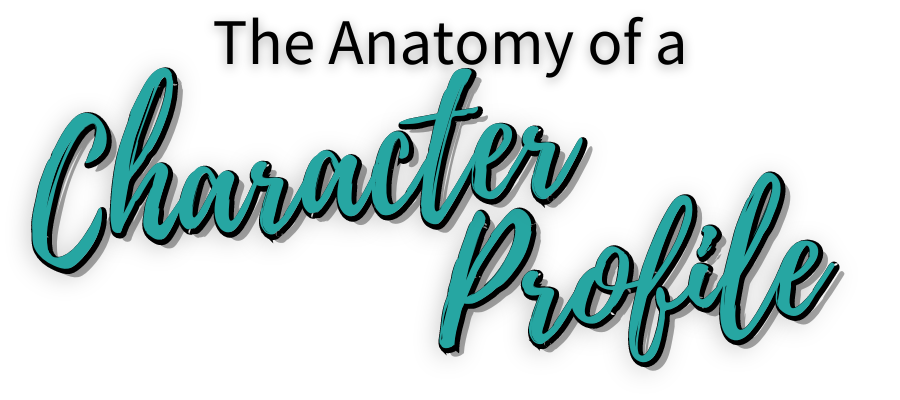The Anatomy of a Character Profile

In the world of storytelling, your characters are the heartbeat of your story. They breathe life into your plot, carry your readers thru adventures, and connect them emotionally to your narrative.
But how do you make your characters unforgettable and relatable? That’s where character profiles come into play.
Your character profile is a comprehensive document that provides detailed information about a character in your story. It serves as an essential reference tool for authors, ensuring consistency and depth in character development.
Include in Your Character Profile
Here’s what you could include on your character profile and why it’s a valuable addition to your content library:
- Character Basics:
Name: Include the character’s full name, along with any nicknames or aliases.
Age: Specify the character’s age, birthdate, and zodiac sign.
Physical Description: Describe the character’s appearance, including height, build, hair color, eye color, and any distinctive features like scars or tattoos.
Occupation: Detail the character’s job or role in the story.
- Personality Traits:
Personality Description: Provide an overview of the character’s personality, covering traits such as introverted, extroverted, shy, outgoing, etc.
Strengths: List the character’s positive qualities and strengths.
Weaknesses: Enumerate the character’s weaknesses or flaws.
- Background:
Backstory: Narrate the character’s history, including their upbringing, significant life events, and any traumas or experiences that have shaped them.
Family: Outline the character’s family members, relationships, and dynamics.
Education: Mention the character’s educational background and any qualifications or degrees.
- Motivations and Goals:
Motivations: Describe what drives the character, their core values, and what they are passionate about.
Short-Term Goals: List the character’s immediate objectives in the story.
Long-Term Goals: Include the character’s broader aspirations.
- Relationships:
Allies: Detail the character’s close friends and allies.
Enemies: Identify any adversaries or rivals.
Love Interests: Specify romantic interests and past relationships.
- Arc and Development:
Character Arc: Explain the character’s growth and development throughout the story.
Turning Points: Highlight significant events or decisions that influence the character’s arc.
- Quirks and Habits:
Quirks: Mention any unusual or endearing quirks that make the character unique.
Habits: Include routine behaviors or habits, such as daily rituals or vices.
- Dialogue and Voice:
Speech Patterns: Describe how the character speaks, their tone, vocabulary, and any unique speech patterns.
Voice: Provide insight into the character’s inner voice, thoughts, and perspectives.
- Relationships with Other Characters:
Dynamic with Protagonist: Explain the character’s relationship with the story’s protagonist.
Dynamic with Antagonist: Detail interactions with the story’s antagonist or primary source of conflict.
Supporting Characters: Summarize the character’s connections with supporting characters.
And lastly, it encourages readers to share their favorite characters with friends – making word-of-mouth marketing easier than ever!
Creating Your Profile Easily & Quickly
Now here’s the best part – creating character profiles doesn’t have to take forever or be a difficult task at all!
Using our done-for-you content template makes creating character profiles quick and easy so you can focus on what really matters—creating amazing stories!
Plus this template comes with customizable features so you can make sure each profile is unique and interesting enough to keep your fans coming back again and again.
This template also allows you to make each profile into a downloadable PDF so readers can easily access them anytime from anywhere – even offline!

Why It’s a Great Content Idea:
Creating character profiles is a valuable content idea for several reasons:
Author Resource: Character profiles help authors maintain consistency in their storytelling and character development.
Engagement: Readers love to delve into character backgrounds and motivations, deepening their connection with the story.
Content Diversity: Character profiles add variety to your content library, appealing to both current readers and potential fans.
Behind-the-Scenes Insights: Sharing character profiles provides a behind-the-scenes look at your creative process, fostering reader engagement and loyalty.
Character Building Workshops: Consider hosting workshops or Q&A sessions with your characters, where readers can ask questions and learn more about your story’s protagonists.
By adding character profiles to your content library, you enrich your storytelling and engage your audience in a dynamic and interactive way, strengthening your bond with readers and fellow writers.
So, build your own character profile here.
Build Your Own Character Profile
Easily and quickly edit your own template and create a piece of content your readers will die for!
With 3 template ideas, you can create countless character profiles for ALL your characters!

What’s Next…
Want a deeper look into how to create content that’s entertaining, educational, engaging, inspiring, and persuasive.
Still wondering about the benefits of offering quality content? Take a look at this article.
Make sure to add the essential content elements to your author platforms!
If you’re ready to take your website to the next level, check out how you can Build Your Own Content Library and pick a content template that fits your readers.
Check out the Ultimate Guide to Building your Content to get tips on how to do-it-yourself!
